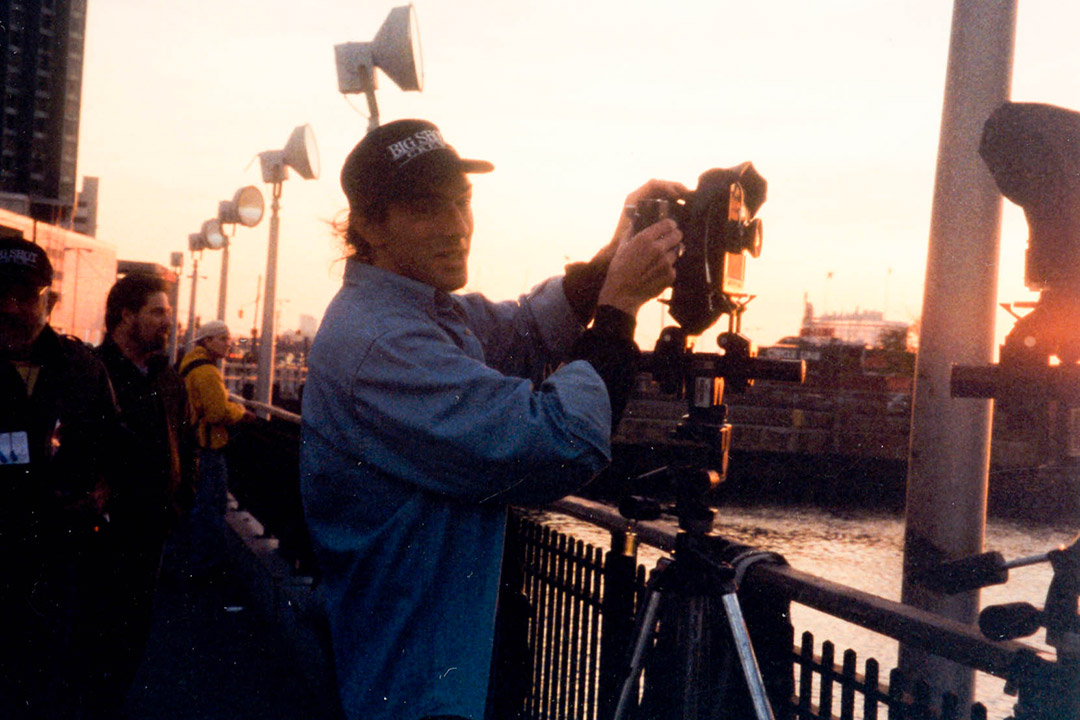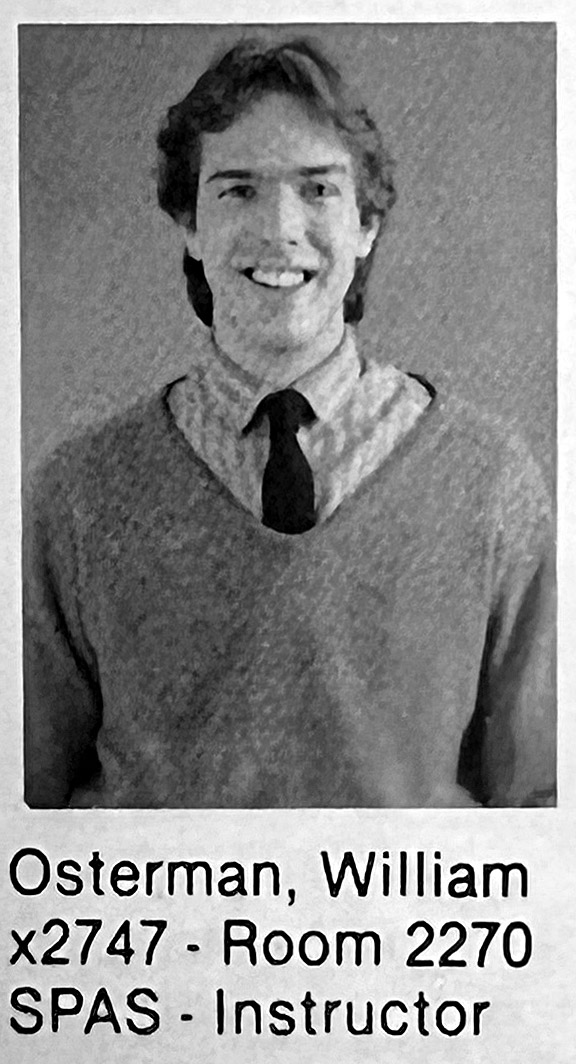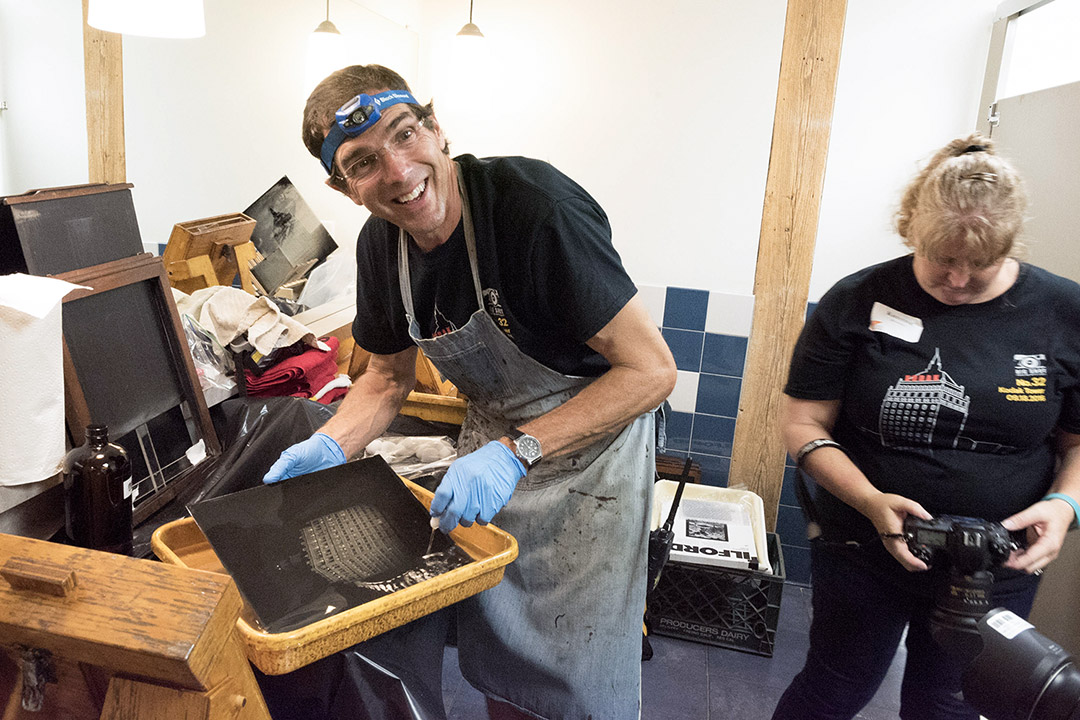Willie Osterman moves on to the next adventure after nearly four decades at RIT
Osterman, professor in the School of Photographic Arts and Sciences, retired in May
provided photo
Willie Osterman, center, adjusts his camera in preparation for RIT Big Shot 14 at the Intrepid Sea, Air, and Space Museum in October 1999.
Professor Willie Osterman, a beloved member of RIT’s College of Art and Design and School of Photographic Arts and Sciences, has retired after 39 years with the university. Osterman’s journey at RIT began in 1984 and, since then, he has left a positive mark on so many people throughout the university. From his involvement with the RIT Big Shot, to his many tours teaching abroad, Osterman’s legacy will remain as he moves onto his next chapter.
provided photo
A clipping from Osterman’s faculty listing circa 1987, three years after he began teaching at RIT.
During his time at RIT, Osterman served as the director of the photography and related media MFA program as well as the director of the undergraduate fine art photography program. He also mastered the collodion wet plate photographic process, one of the earliest forms of analog photography, and offered classes on the process so students could dip their toes into analog in the age of digital photography.
Osterman shared that one of the things he’ll miss most is regularly seeing his students and colleagues, and the organic hallway conversations that result from being immersed in the campus culture. He described himself as both a professor and friend in the college, a mindset that followed him throughout his career, and he hopes to maintain those connections through retirement.
Below are some reflections Osterman shared about his career at RIT.
What are you most proud of when looking back at your time at RIT?
There are a lot of things, but one is that I think the photo school is better than it’s ever been in the near 40 years I’ve been here. We successfully made the transition from analog to digital. When I started, there were no computers here, so that whole transition to where we’re at now, having to teach it, having to learn it, and having to keep up with it—I think that evolution is amazing. I am still key on analog processes, I prefer that to all the digital processes, so I hope that the school keeps analog alive.
In terms of what I’m most proud of, a lot of it has to do with the faculty that we’ve hired. I started in 1984 and I came from the University of Oregon. When I went to the first faculty meeting, there were 50 people in the room—that’s when the film program was part of the photo programs and it was the big School of Graphic Arts and Photography—and in that room of 50 people, 46 of them were white men and there were four women, two who had just been hired. Another detail is that all the men were wearing white shirts and ties and I had a T-shirt on. I remember sitting there, looking around, and thinking, ‘what the hell did I get myself into?’ But it's a whole different school of thought now, and a whole different school altogether.
What are some of your fondest memories connecting with RIT’s photography community through the Big Shot?
provided photo
During Big Shot 32 at Kodak Tower, Osterman fondly recalls turning a men’s bathroom into his dark room to process a photo using the collodion wet plate process.
If you know the history of the Big Shot, you’ll know it started as a group of people being bored in the winter. They went up to Highland Hospital, turned off all the lights, and used flashes and big flashlights to paint with light and illuminate the building. It’s a silly idea when you think about it, but it’s really all about community. When you do these things there’s a lot of waiting around, and between all of the students, volunteers, and other community members who come, you talk to a lot of people. For some people, the Big Shot became a real, significant event for them, and that to me is really interesting considering the origins. The end result is the photograph, but that’s sort of the excuse for the experience—an excuse to bring everyone together.
What are your post-RIT plans?
I’ve got a nice studio, a darkroom, and all of that in my home so I can play in there forever. My wife and I are also going to travel. We bought a van and I converted it because I do a lot of woodworking on my own. My wife had cancer and, fortunately, 11 years later she’s doing fine, but she’s always wanted to go back to Rome. I’d love to get back there with her and just travel more while we can.
I will always love working with students, so I’m going to continue teaching workshops. Every year in August or September, depending on the tides, I teach a workshop in Oregon along the Oregon coast. I’ve also been talking with the Eastman Museum about possibly hosting workshops with them.
















